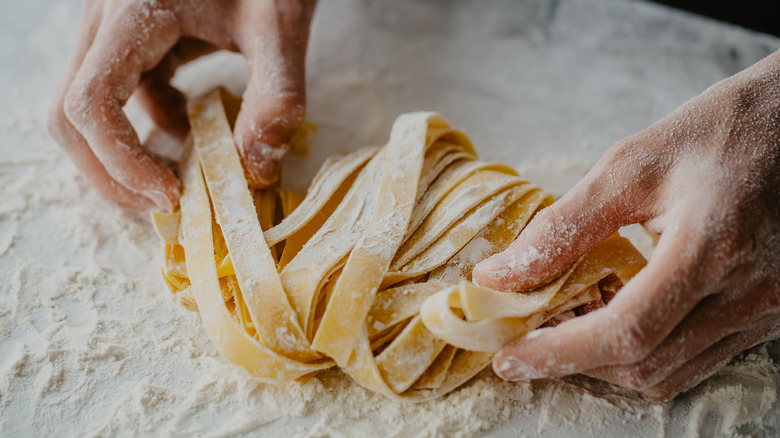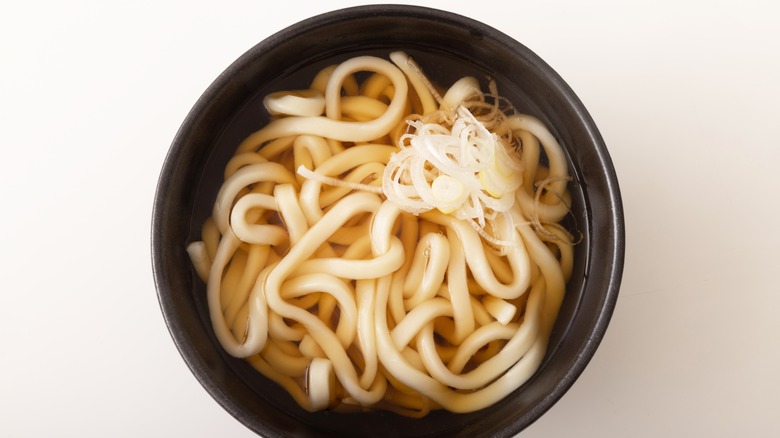How Feet Used To Be Involved In The Pasta-Kneading Process
Sounds kinda gross? Or even... kinda fun?
Turns out, when it comes to homemade pasta, the best kitchen tool is one you already have. There are plenty of pasta mistakes you can make in the kitchen (adding the pasta too soon, using the wrong sized pot, overcooking, and undercooking) but, make no mistake, getting your feet involved isn't an accident. Folks have been kneading pasta dough by foot for centuries!
When you hear the word "pasta," Italy might be the first place that comes to mind. It's true that, by 1400, large commercial batches of vermicelli were being kneaded (by foot!) in Italian pasta shops, via The Atlantic. But, pasta didn't actually reach Italy until the thirteenth century. It's even rumored (although unlikely) that Marco Polo first introduced pasta to Italy from his travels to China, per PBS. Asia was serving up noodles long before Europe; Sanuki Udon noodles can be traced back to the Japanese Heian period (794-1185), over 1,200 years ago. And, in Japan, Udon noodles were traditionally kneaded under foot, too.
Step on that Udon
Yoko Isassi, chef of Japanese cooking class Foodstory in Los Angeles, explained to HuffPost that noodles were historically made by women, and Udon's rigid dough was intensely laborious to knead by hand in large batches. Kneading with feet exerts a person's entire body weight onto the dough, which is both effective and conserves energy. These cooks would even lift bags of rice as they stomped, Isassi says, to increase their overall mass.
Using feet to knead might be terrific fun, but it's also a very strategic cooking technique. According to the head chef at Sanuki Mengyo in Kagawa, Japan, efficiency is the key element to making good Udon noodles. The faster you knead, he explained to Eater, the more flour comes off of your fingers (or feet). This is how the dough's gluten strands are broken apart, which is the opposite of how Italian pastas are kneaded, he says. That's why Udon makes for such a chewy mouthful compared to linguine. The secret ingredient is speed, and feet are a great tool for achieving it.
Like most things in life, however, it's important not to over-step. Even though kneading tenderizes tough dough, says Udon restaurant Szechuan House, kneading too much makes for overly chewy noodles. For that perfect noodle consistency, it recommends exactly 50 steps.

